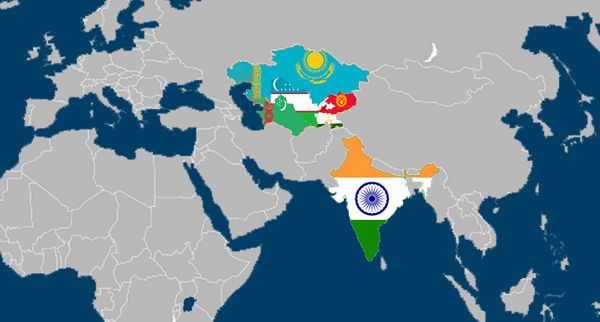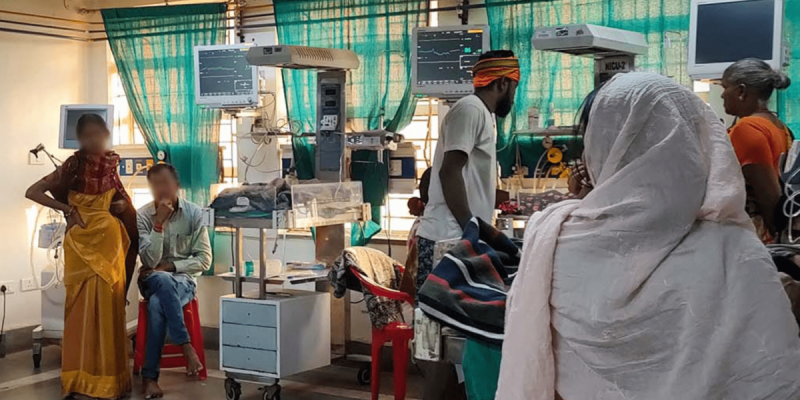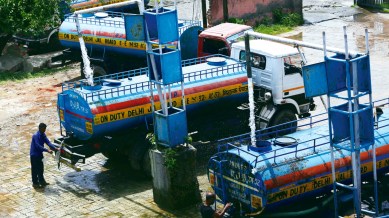- Courses
- GS Full Course 1 Year
- GS Full Course 2 Year
- GS Full Course 3 Year
- GS Full Course Till Selection
- MEP (Mains Enrichment Programme) Data, Facts
- Essay Target – 150+ Marks
- Online Program
- GS Recorded Course
- NCERT- First Ladder
- Polity
- Geography
- Economy
- Ancient, Medieval and Art & Culture AMAC
- Modern India, Post Independence & World History
- Environment
- Governance
- Science & Technology
- International Relations and Internal Security
- Disaster Management
- Ethics
- Current Affairs
- Indian Society and Social Issue
- CSAT
- 5 LAYERED ARJUNA Mentorship
- Public Administration Optional
- ABOUT US
- OUR TOPPERS
- TEST SERIES
- FREE STUDY MATERIAL
- VIDEOS
- CONTACT US
India-Central Asia Connectivity and Trade
India-Central Asia Connectivity and Trade
06-06-2025

Why in the News?
- Recently India's External Affairs Minister (EAM) spoke at the India-Central Asia Business Council meeting on June 5, 2025.
- He called for stronger trade and better connectivity between India and Central Asian countries.
- The event took place ahead of the fourth India-Central Asia Dialogue on June 6, 2025.
What is the Historical Background?
- Ancient Civilizations and Trade Links:
- India and Central Asia have shared deep historical and cultural ties going back more than 2000 years.
- The Silk Road:
- This ancient trade route connected India to Central Asia and beyond.
- Indian goods like spices, textiles, and precious stones were traded, while Central Asia sent horses, wool, and dried fruits to India.
- Buddhism:
- Indian Buddhist monks and scholars travelled to Central Asia, where Buddhism spread and flourished for centuries.
- Important Buddhist monasteries and remains have been found in countries like Uzbekistan and Tajikistan.
- Cultural Exchange: Along with goods, India shared ideas, art, architecture, and languages with Central Asia.
- Sanskrit and Indian philosophical thoughts reached Central Asian cities that became learning hubs.
- Political and Dynastic Connections:
- The Kushan Empire (1st–3rd century CE):
- It was founded by rulers from Central Asia (Yuezhi tribes) and extended into northern India.
- The Kushans helped spread Buddhism from India into Central Asia and China.
- The Mughal Empire:
- Babur, the founder of the Mughal Empire in India (1526), was born in Fergana Valley (present-day Uzbekistan).
- His Central Asian roots created lasting political, cultural, and familial links between the two regions.
- The Kushan Empire (1st–3rd century CE):
- Religious and Linguistic Influence:
- India’s influence was also visible in religion and language. Buddhism, Hinduism, and even Indian astrology had a presence in Central Asia for centuries.
- Central Asian cities like Samarkand and Bukhara became centers for Indian scholars, and many Indian texts were translated into local languages.
- Modern Engagement:
- After India’s independence, relations with Central Asia were limited because these countries were part of the Soviet Union.
- But after the Soviet breakup in 1991, India established formal ties with all five Central Asian republics i.e., Kazakhstan, Kyrgyzstan, Tajikistan, Turkmenistan, and Uzbekistan.
- India launched the “Connect Central Asia” Policy in 2012 to deepen ties in political, economic, cultural, and security areas.
- Strategic and Cultural Revival:
- Defence cooperation and military training:
- Trade through Chabahar Port and the International North-South Transport Corridor
- Cultural exchanges, education, and promotion of digital tools like Aadhaar and DigiLocker
- Popularity of Indian culture like Bollywood films and yoga in Central Asian societies
- Defence cooperation and military training:
What are the Key Highlights?
- High-Level Participation:
- The event was addressed not just by India’s EAM but also by top foreign ministers from Kazakhstan, Tajikistan, Turkmenistan, and Uzbekistan.
- This highlights that the dialogue wasn’t just a routine event but it was a high-level regional engagement, showing the collective interest of Central Asian nations in deepening ties with India.
- Platform of Discussion:
- The meeting was organized by Federation of Indian Chambers of Commerce & Industry (FICCI), and it took place under the India-Central Asia Business Council, ahead of the 4th India-Central Asia Dialogue.
- It shows that this is not only a diplomatic dialogue but also a business-led initiative, aiming to bring governments and industry closer for practical outcomes.
- Operation Sindoor and Taliban Engagement:
- The India-Central Asia dialogue comes just a month after India’s Operation Sindoor (targeting terror groups in Pakistan) and renewed contact with the Taliban.
- This adds a strategic and security dimension to the talks.
- Central Asia shares borders with Afghanistan and is sensitive to regional stability.
- India’s outreach shows it wants to work beyond just economics on security, too.
- Focus on Regional Security:
- Ministers will discuss not just trade and technology, but also regional security challenges and global issues of mutual interest.
- Central Asia is close to conflict-prone areas like Afghanistan, and India’s role in regional peace and anti-terror operations (e.g., Operation Sindoor) makes this engagement strategically important.’’
- India’s Engagement with the Taliban:
- The dialogue takes place soon after India reached out to the Taliban administration in Afghanistan.
- It shows India is adapting its foreign policy to new realities and seeking stable links in the region despite earlier tensions.
- Upcoming SCO Summit in Tianjin, China:
- The Prime Minister of India is expected to visit China for the Shanghai Cooperation Organization (SCO) summit.
- India is balancing bilateral ties with Central Asia alongside multilateral engagement through SCO, where China and Russia also play key roles.
- Indian-Central Asia Dialogue:
- 1st Indian-Central Asia Dialogue: January 2019, Samarkand, Uzbekistan
- 2nd Indian-Central Asia Dialogue: October 2020, held virtually
- 3rd Indian-Central Asia Dialogue: December 2021, New Delhi, India
- 4th Indian-Central Asia Dialogue: June 6, 2025, New Delhi, India
- Financial Cooperation Deepening:
- Special Rupee Vostro Accounts are already being opened by Central Asian banks.
- UPI discussions underway for digital payment integration.
- These are concrete steps toward rupee-based trade and digital economic connectivity, reducing dependence on the U.S. dollar and SWIFT.
- Trade Volume vs. Potential:
- EAM of India said India-Central Asia trade has reached $2 billion, but this figure does not reflect the full potential, especially in today’s uncertain global economy.
- It highlights a sense of urgency to expand trade ties.
- Central Asia is a natural trade partner for India, and the economic slowdown worldwide makes regional cooperation more necessary.
- Pharmaceuticals Sector:
- Central Asia is one of the largest markets for Indian pharmaceutical products.
- This is a key export strength for India.
- Expanding pharma trade will benefit both India’s economy and public health needs in Central Asia.
- Energy and Natural Resources Cooperation:
- EAM identified uranium, crude oil, gas, mining, coal, and fertilizers as sectors for long-term cooperation.
- These are strategic sectors that can ensure India’s energy and food security, and they offer Central Asian nations steady demand and investment.
- Digital Public Infrastructure:
- India is willing to partner in sharing digital platforms like Aadhaar and DigiLocker.
- This shows India is exporting its Digital Public Infrastructure (DPI) model, which has been praised globally.
- It can improve public service delivery, student verification, and tourism in Central Asia.
- Kazakhstan’s Regional Connectivity Plan:
- Kazakhstan’s Foreign Minister said his country is working to boost connectivity between Caspian Sea ports and Iran’s Bandar Abbas Port.
- Kazakhstan’s move supports regional trade corridors like the International North-South Transport Corridor (INSTC) and complements India’s Chabahar strategy.
What is the Significance?
- Strengthened Regional Ties:
- India is building deeper and more stable relationships with Central Asian countries through trade, technology, and people-to-people links, especially in sectors like pharmaceuticals, which are crucial for both economic and public health cooperation.
- Energy and Resource Security:
- Long-term partnerships in oil, gas, uranium, coal, mining, and fertilizers will help India secure its strategic energy and resource needs, while giving Central Asian countries assured markets and investment.
- Digital Diplomacy:
- India’s offer to share digital public infrastructure (Aadhaar, DigiLocker) demonstrates leadership in digital governance. It can enhance student mobility, tourism facilitation, administrative cooperation, and trust-building.
- Financial Integration:
- Steps like opening of Special Rupee Vostro Accounts and discussions around UPI-based payment systems aim to enable mutual trade in national currencies, reducing dependence on the U.S. dollar and creating a more resilient financial ecosystem.
- Strategic Engagement Post-Operation Sindoor:
- This dialogue gained importance after India’s Operation Sindoor against terror camps in Pakistan and outreach to the Taliban in Afghanistan, highlighting India’s growing role in regional security affairs.
- Multilateral and Bilateral Synergy:
- India’s presence in both bilateral (India-Central Asia Dialogue) and multilateral platforms (Shanghai Cooperation Organization – SCO) shows a balanced, layered approach to engagement in Central Asia.
- Connectivity and Trade Hub Potential:
- The International North-South Transport Corridor (INSTC) and Chabahar Port can transform India into a logistical bridge between Central Asia, the Indian Ocean, and beyond, reducing costs and enhancing trade efficiency.
- Support from Kazakhstan and Regional Partners:
- Efforts by Kazakhstan to link Caspian ports with Iran’s Bandar Abbas port complement India’s vision of regional connectivity, reinforcing a shared regional commitment to economic integration.
What are the Challenges?
- Limited Trade Volume: Despite growing engagement, India-Central Asia trade stands at only $2 billion, which is far below its potential.
- Lack of Direct Connectivity: India does not share a land border with Central Asia, and trade routes are often dependent on third countries like Iran, Afghanistan, or Pakistan many of which are geopolitically sensitive or unstable.
- Geopolitical Instability: Instability in Afghanistan, India’s strained relations with Pakistan, and regional tensions pose hurdles to seamless connectivity, especially along the Chabahar and INSTC corridors.
- Infrastructure Gaps: While efforts are being made to develop Chabahar Port and link it with the International North-South Transport Corridor (INSTC), last-mile connectivity, customs coordination, and port infrastructure still require major improvements.
- Financial and Regulatory Barriers: The process of settling trade in national currencies, opening Special Rupee Vostro Accounts, and integrating systems like UPI still faces regulatory, banking, and technological hurdles.
- Competition from Other Powers: Central Asia is also a region of interest for China (via the Belt and Road Initiative), Russia, Turkey, and the EU, making it a competitive space where India must carve out its role strategically.
- Digital Readiness Gap: India is offering platforms like Aadhaar and DigiLocker, technical capacity and digital infrastructure in many Central Asian countries may not yet be ready to fully absorb these systems.
- Lack of Private Sector Involvement: There is limited participation by Indian private businesses, startups, and SMEs in Central Asian markets due to lack of awareness, language barriers, and logistical concerns.
Way Forward:
- Expand Trade Volume and Diversity: India and Central Asian countries should work to increase trade beyond the current $2 billion, focusing on sectors like pharmaceuticals, IT, agriculture, and renewable energy.
- Strengthen Chabahar Port and INSTC: Speed up development and usage of Chabahar Port and the International North-South Transport Corridor (INSTC) to create faster and cheaper trade routes connecting India with Central Asia, Europe, and Russia.
- Use Local Currencies for Trade: Promote mutual trade in national currencies by expanding the use of Special Rupee Vostro Accounts and adopting UPI (Unified Payments Interface) to reduce dependence on the U.S. dollar and simplify cross-border transactions.
- Share India’s Digital Platforms: Offer Central Asia access to India’s digital tools like Aadhaar and DigiLocker to improve services for students, tourists, and businesses, and strengthen digital governance ties.
- Ensure Regional Stability and Security Dialogue: Continue engaging Central Asia on security cooperation, especially after Operation Sindoor and ongoing developments in Afghanistan, to promote peace and shared counter-terrorism efforts.
- Coordinate Through Multilateral Forums: Leverage platforms like the Shanghai Cooperation Organization (SCO) and the proposed India-Central Asia leadership summit to maintain consistent dialogue at the highest levels.
|
Ensure IAS Mains Question
Q. India's evolving engagement with Central Asia reflects both economic opportunity and strategic necessity. Discuss the significance of India-Central Asia connectivity initiatives in the backdrop of regional geopolitical challenges. (250 words) |
|
Ensure IAS Prelim MCQs Q. Consider the following statements with respect to India-Central Asia Connectivity:
How many of the above statements is/are correct? Ans: (B) Exp:
|



